Winter’s Legacy and Spring Forward
This winter’s cold is most evident on bamboo. Clumps of tawny, dead leaves, still attached to the canes, stare out from among the trunks and stems of dormant trees and shrubs. I hadn’t realized that bamboo was so widely planted. The depth of cold isn’t what killed the canes and leaves; it was the duration of cold. Seventy miles south of here, leaves of yellow groove bamboo, Phyllostachys aureosulcata, among the most cold hardy of the thick-caned bamboos, typically stay green and fresh all winter, but even they’ve been killed.
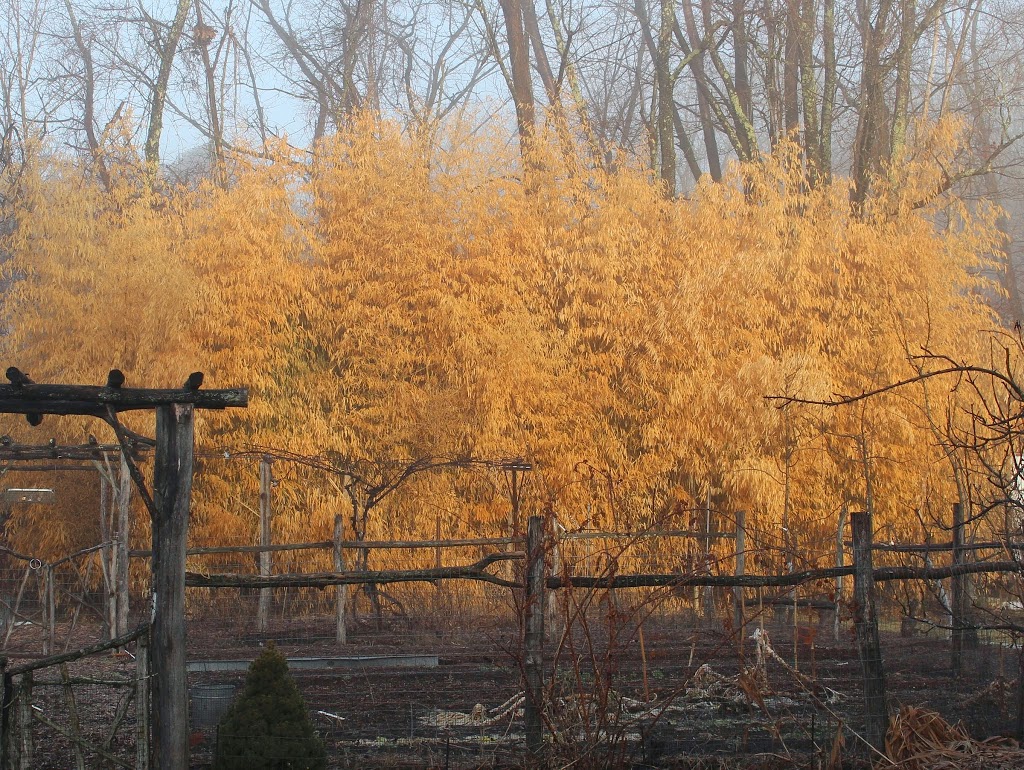 |
| My bamboo, before pruning |
No, the plants aren’t dead; just their canes and leaves. Warm weather will coax new shoots from the roots, shoots that will push skyward rapidly. I’ve measured as much as 6 inches of elongation per day. The record for bamboo growth, not around here, of course, is almost 3 feet in one day! (That little tidbit comes from Bamboo, by Susanne Lucas, a beautiful, new book — in its binding, photographs, and clear writing — that provides an introduction to the culture, horticulture, and myriad uses of bamboo. Read it and you also will want to grow bamboo. For even more in-depth information on bamboo botany, culture, and uses, I turn to the no-frills book, The Book of Bamboo, by David Farrelly. )
Once bamboo shoots stop their skyward ascent, the walls of the canes begin to thicken. Canes that survive winter with green leaves intact don’t grow any taller in subsequent years. Cane diameters remain constant as they thicken within, in so doing becoming more useful for stakes, fencing, gates, and structures in the garden and beyond. Eventually, whether winter temperatures are frigid or mild, a cane dies.
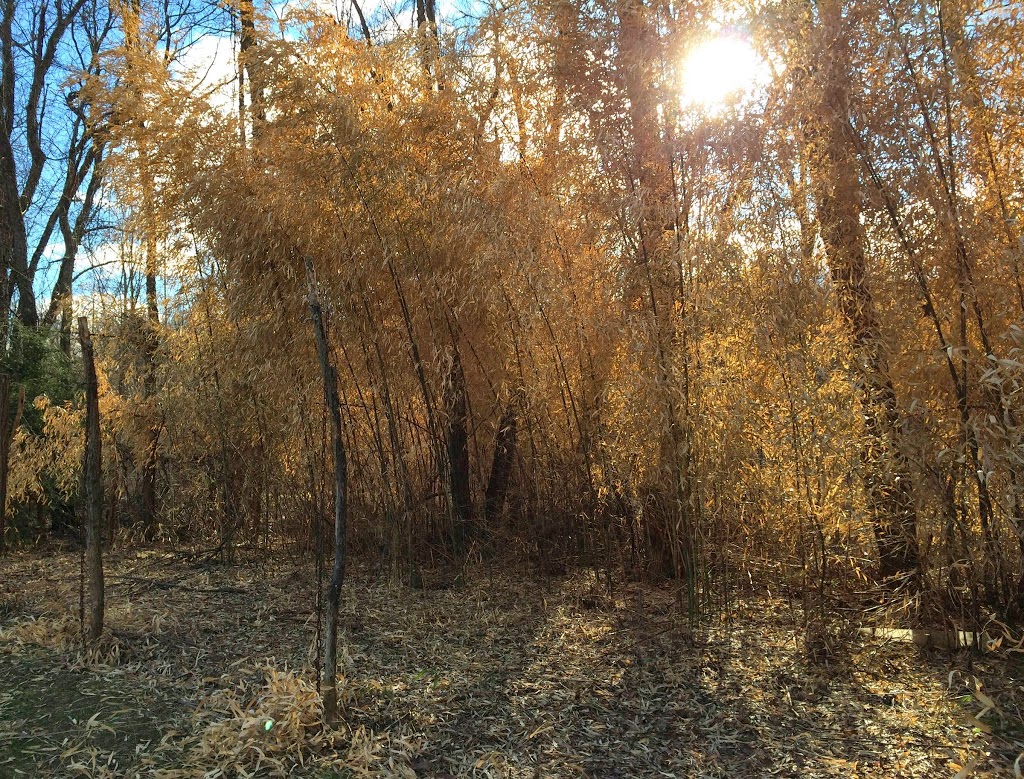 |
| Bamboo, after pruning almost all of it down to the ground |
Dead canes, weather from age or from winter cold, eventually need to be removed to keep a grove looking spry. For my planting, I decided on the dramatic approach, cutting virtually the whole planting to the ground. I used a lopper, attacking canes one at a time, then a machete to remove side shoots with leaves from canes worth saving — not an easy job but one that yielded an abundance of useful canes. Now, what to do with my stockpile?
————————————————
As winter freezes have segued into capricious spring frosts, seedlings need to be readied for the great outdoors. In a greenhouse, on a windowsill, or beneath fluorescent lights, these plants lead a coddled life. Outside, life is tougher: temperatures swing 50 degrees in a 24 hour period, winds whip tender leaves, and intense sunlight beats down.
What these plants need is a couple of weeks of acclimatization — “hardening off.” Not too quickly and not too severely, though, or leaves could burn or flowers could appear prematurely; a plant could even die from shock. The thing to do is to find some cozy spot outdoors for the transplants, a spot that is sheltered from wind and receives sun for only part of the day, or else dappled sun all day. After about a week, the plants are ready to me moved to a more exposed location, one that just takes the edge off gusty winds and broiling sun. A week at this second location and plants are ready to be planted out in their permanent homes.
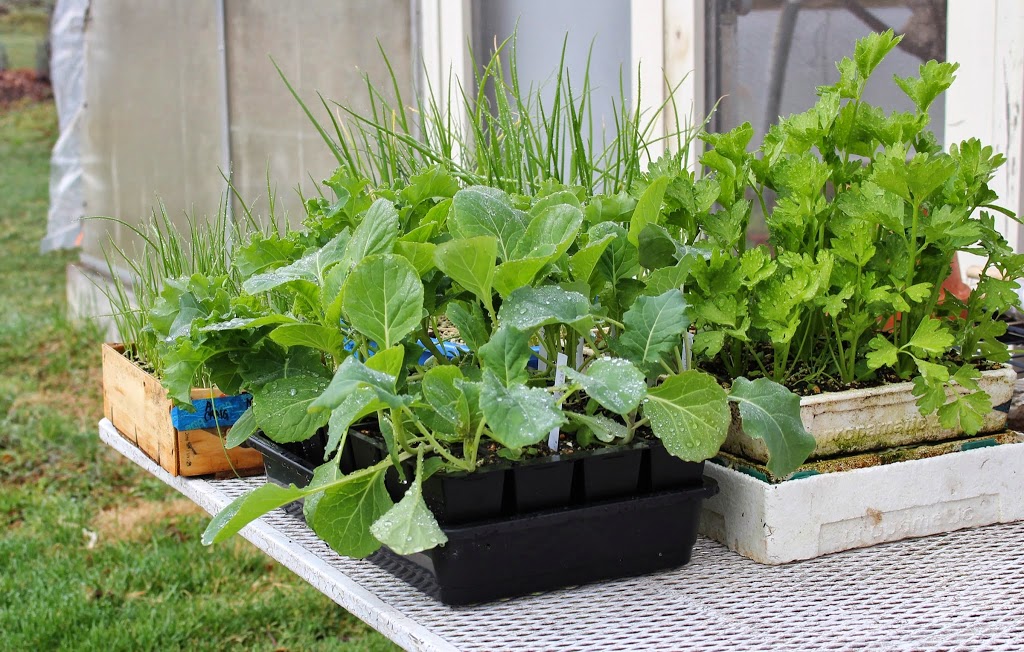 |
| Seedlings getting ready of the great outdoors |
The kinds of changes that hardening off induces in coddled seedlings depends on the nature of the seedlings themselves. Seedlings of cabbage, lettuce, snapdragons, pansies, and other plants that can eventually laugh off cold even below freezing develop a tolerance for cold by building up sugars in their cells. Gradual exposure to more intense light also thickens cell walls, fibers, and cuticles on both existing and new leaves. With increasing light exposure, chloroplasts, the green, light-trapping energy factories in leaves, move around and align themselves in such a way that the leaves turn darker green. And the leaves’ stomatal pores, through which water is lost and carbon dioxide and oxygen are exchanged, become more quickly able to open and close in response to changing conditions.
Cold-tender plants such as tomatoes, marigolds, and zinnias suffer at temperatures even above freezing. With these plants, chilling injury causes changes in plant membranes that interfere with photosynthesis and damaging toxins build up in leaves. Hardening off makes these plants better able to repair and prevent such damage. But temperatures that still drop below freezing mean that it’s still too early to begin hardening off cold-tender plants. Anyway, they’re still too small. Wait a month.
During the two weeks of hardening off any plant, growth slows and the plant becomes stockier. This is good; it indicates that a transplant is ready to face the world.

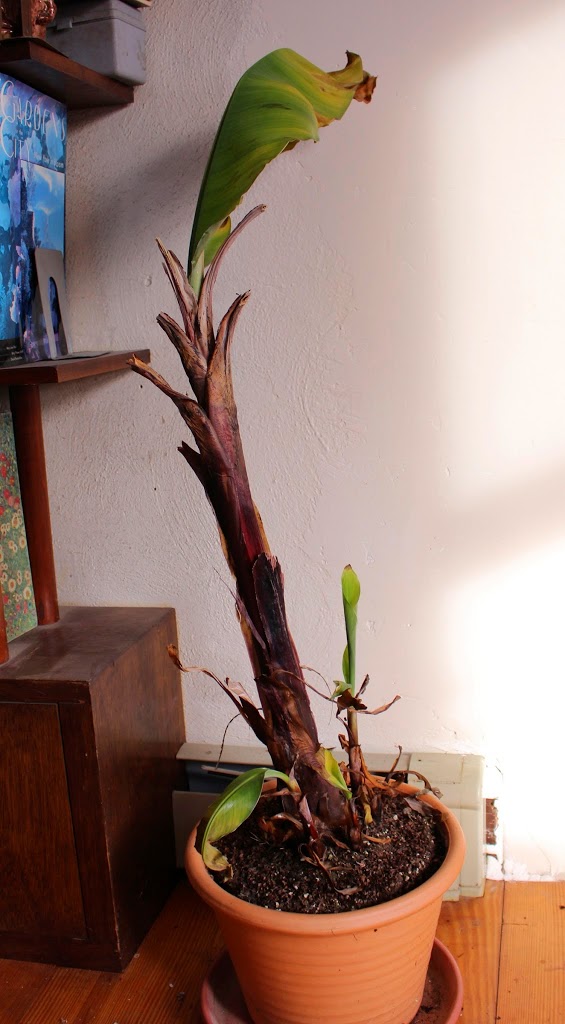
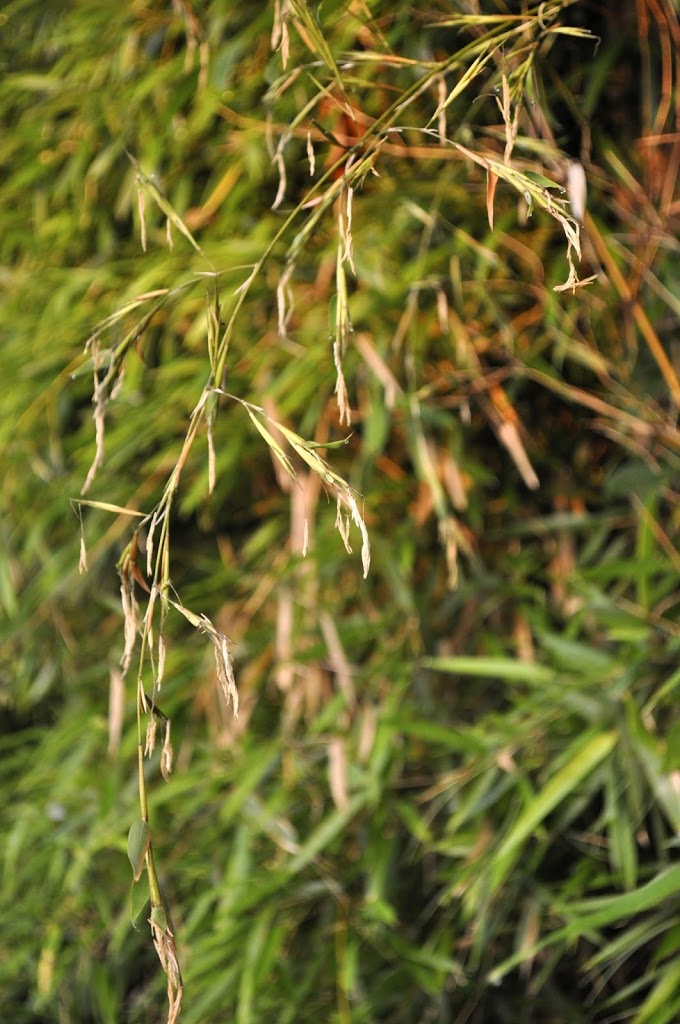

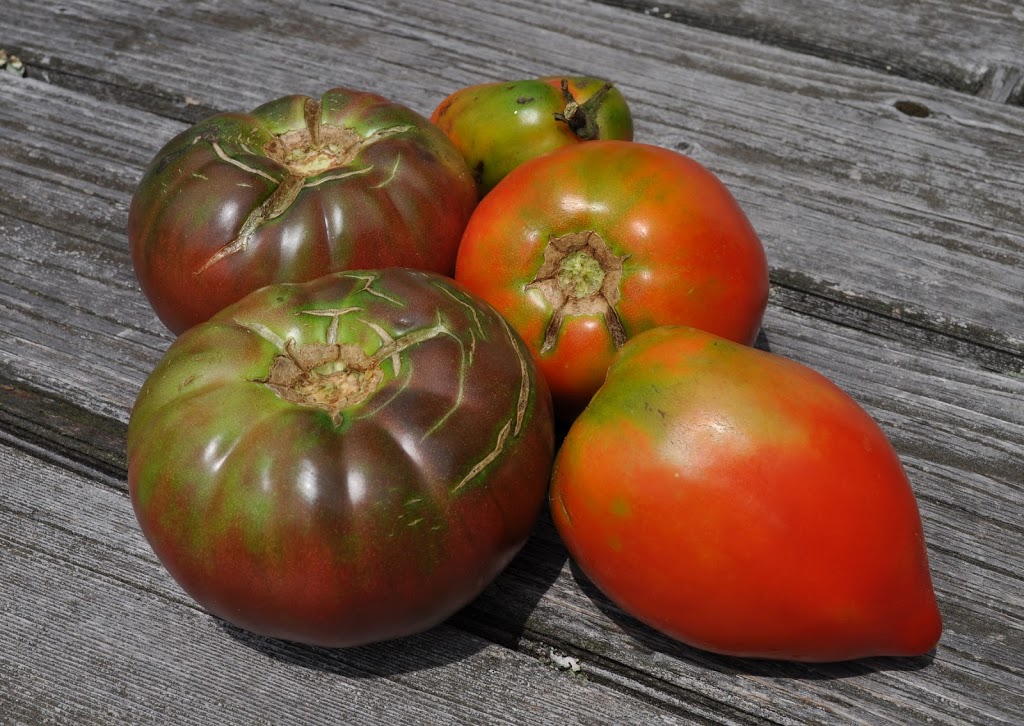
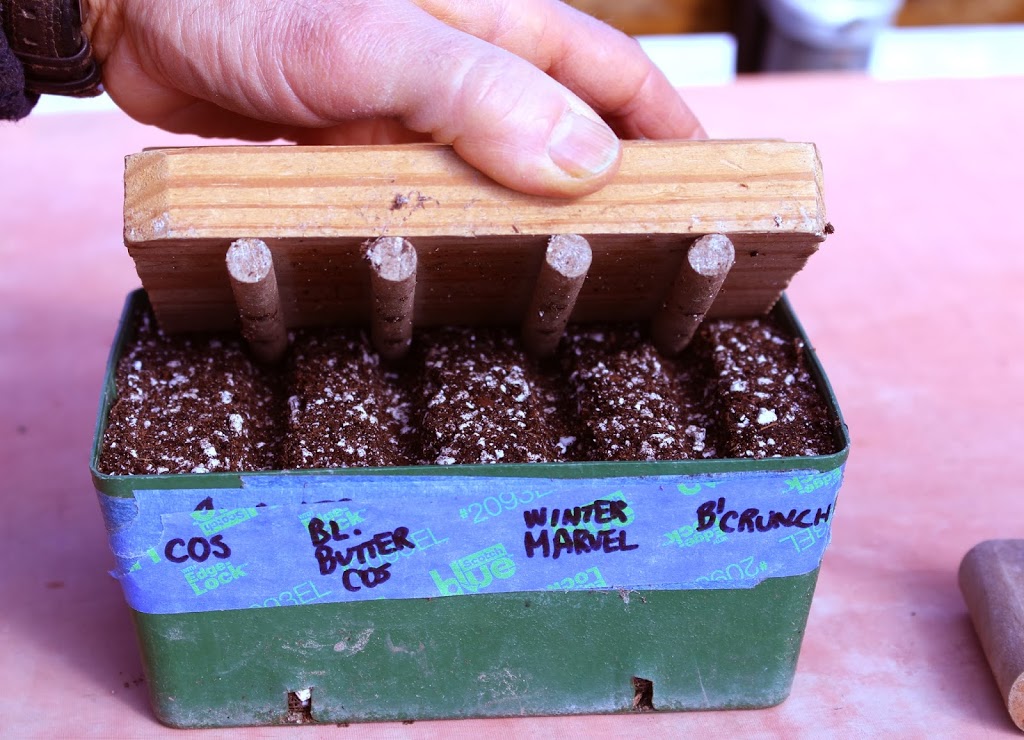
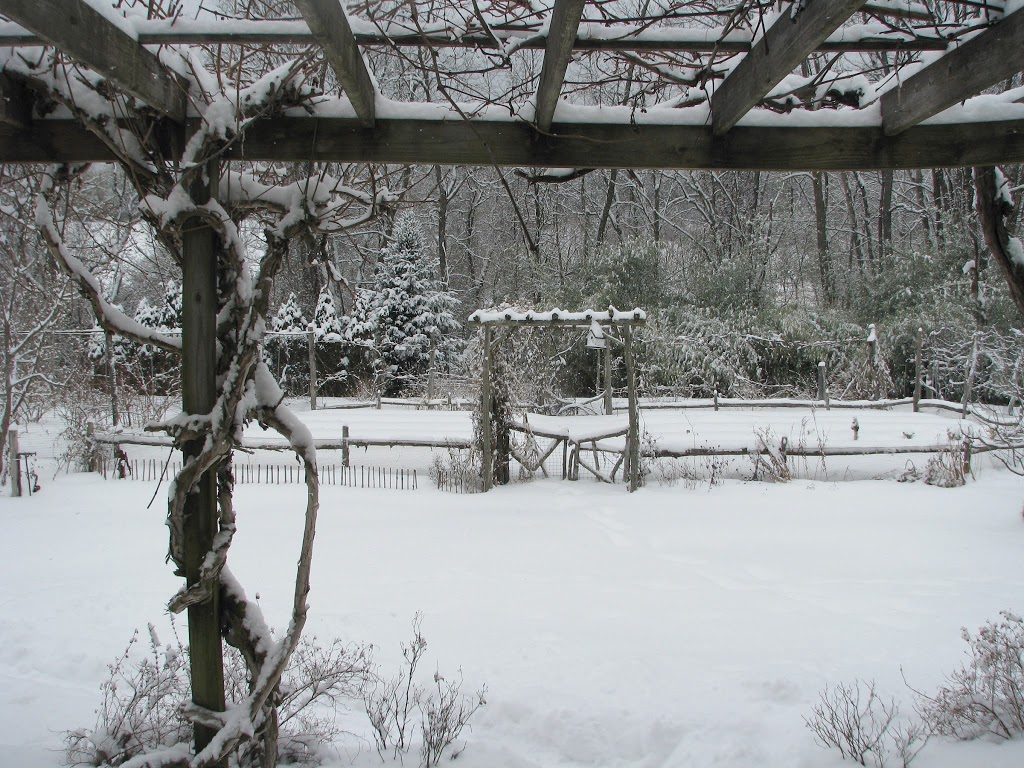

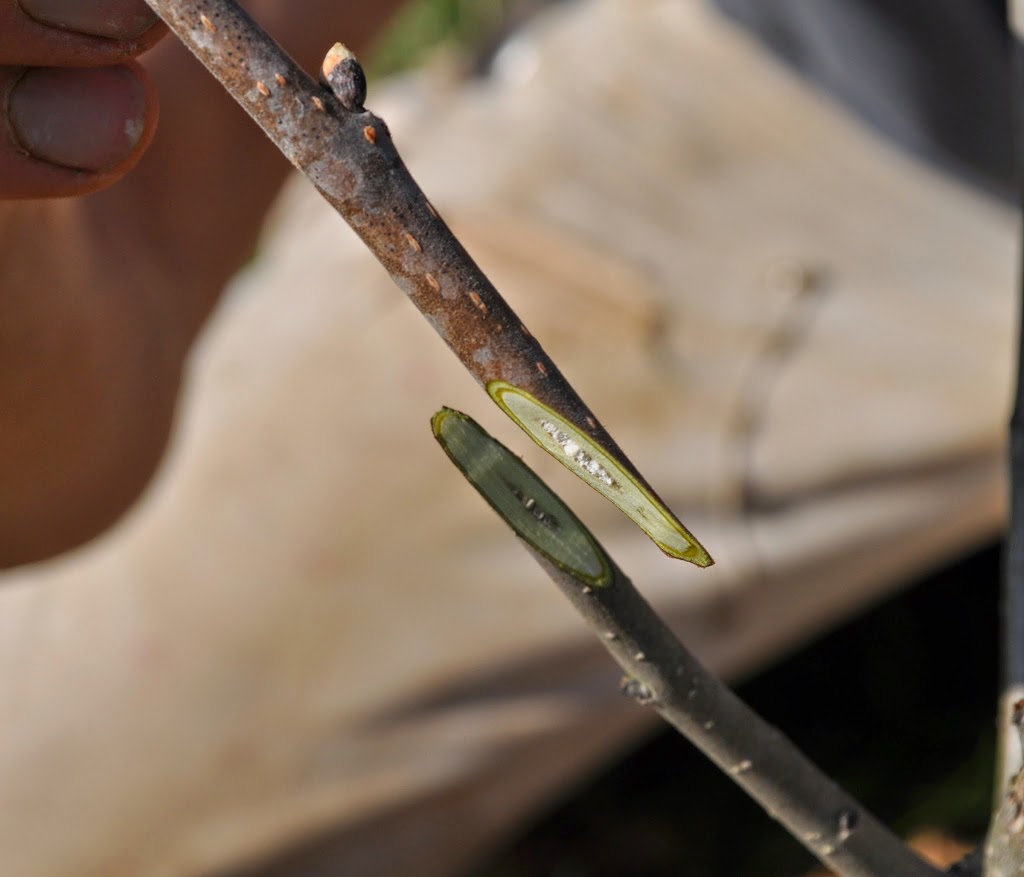
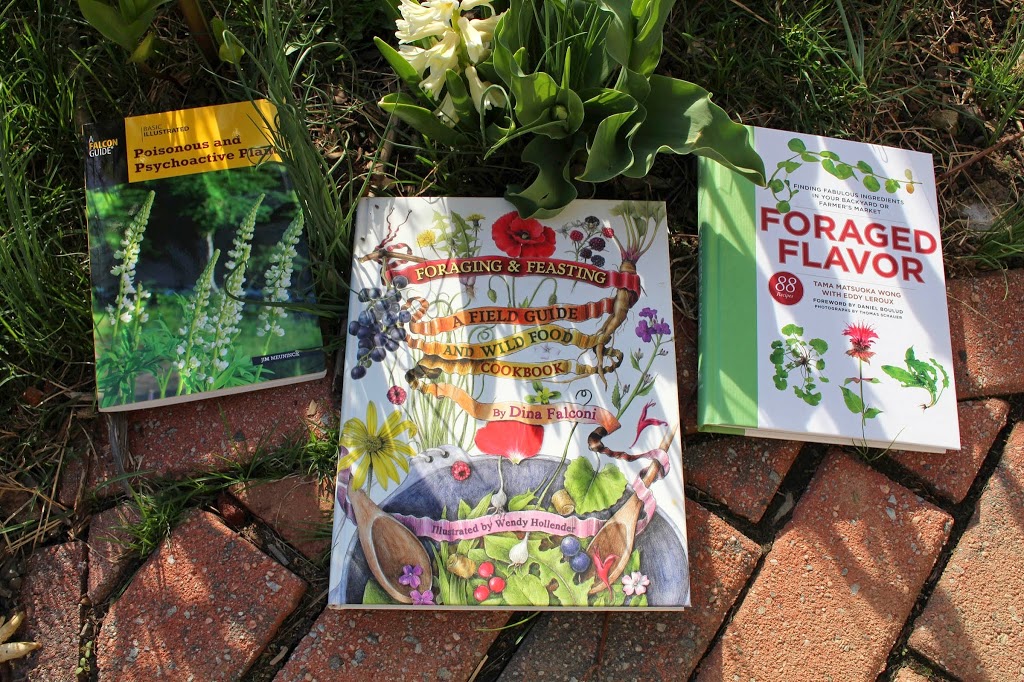
Oh, I love using bamboo in the garden and have even used my brother-in-law’s old tiki torches for stakes and such. I never dreamed I could grow my own … hmmmm. Can’t wait to see the new shoots! The seedlings look great. Mine are still quite small and its way too soon to put anything out yet that I’ve started. Brrr.
Is there a bamboo that would work in zone 6A and that would act as a privacy fence but not encroach on a neighbor?
Thanks for the info about how to harden off plants; it was very helpful to me.
Fargesia is a genus of hardy bamboos that are clumping, rather than running, types. Choose from a number of species. Raintree Nursery, one of my advertisers, has nice plants of Fargesia nitida, Blue Fountain bamboo.
Great post on bamboo. Thank you for the two book references.
I have heard too many callers to an NPR gardening radio show complain about how difficult bamboo is to eradicate if it gets out of control… I hope the book and what I’ve learned so far will help prevent that.
My real question is about Machetes. The one at the big-box store looks cheap.
Where can I buy a nice Machete? I only plan on ever buying one in my life.
My wife thinks I should just use the chef knife from our kitchen but as the person who sharpens it, I figured I should separate my large knives by function.
I may use the chef knife to do you potted fruit root removal that I saw in either your pruning book or grow fruit naturally book.
Thank you!
Check out Orchard Equipment Supply Co., one of the advertisers on my blog for a good selection of machetes. Mine is 45 years old so probably not still available.
I have a lot of old knives dedicated to garden rather than kitchen use.
I wanted to grow fargesia for screening here in Kingston but BambooGarden says in this northern place fargesia must have summer shade. & I’m afraid the Phyllo would run away with the yard, sidewalk, neighbors’ garden. Those roots–even young roots–are Hard & they don’t die if pruned, they just send up another shoot. Bamboo is so beautiful & makes itself into a little grove. But I am wary of phyllo.
Phyllo, by which I assume you mean one of the Phyllostachys species of bamboo, do “run away,” as I know from personal experience.They are now illegal to plant in NY. But they are beautiful. It does not make sense that Fargesia would need summer shade this far north. I’m not sure of their needs.I planted it once; it grew beautifully for one season and than was stone dead by the end of its first winter. Not sure why.